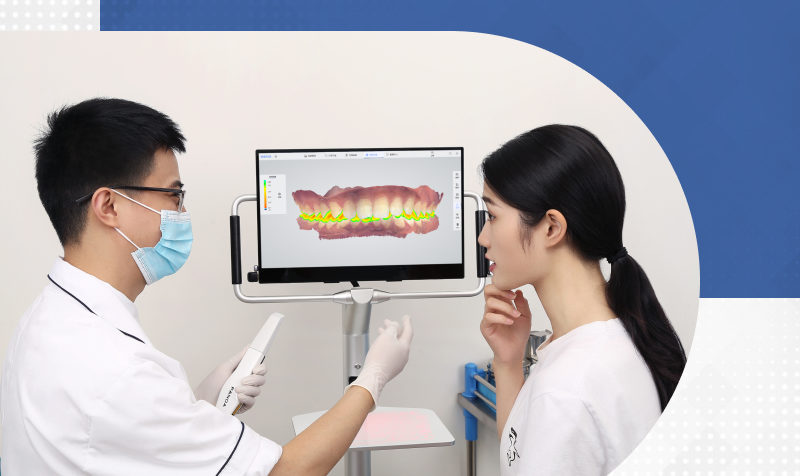Intraoral scanners are devices similar to 3D scanners. They are used for getting dental impressions of patients in clinics where digital dentistry is in practice.
The process involves projecting a light source onto the surface that needs to be scanned, the teeth. The images are then taken by the imaging sensors for processing by a scanning software to produce a 3D surface model showing the geometry of the gingiva and teeth. The best thing about these scanners is that they completely omit the need for wax-ups and old analog impressions associated with all-ceramic restorations.

Intraoral Scanners: The Process Involved
Before we begin discussing how these scanners work, one needs to know that the introduction of these scanners has proved to be beneficial for both dentists as well as patients. We shall discuss this in the latter part of this article.
Now coming to the point of how a dentist captures the images of the teeth. The scanner is inserted inside the patient’s mouth and is moved all over the surface area of the teeth. The dentist will also have a monitor by his or her side where the captured dental images are displayed continuously.
The process is time-saving since it takes only a few minutes to capture the digital impressions. The clinician, if not satisfied with the real-time image, can retake the impressions. Also, the images can be maximized or minimized for obtaining better details of the buccal cavity.
What are the Benefits of using Dental Scanners?
Dental scanners are advantageous to both patients and dentists. Let’s take a look at how they’re beneficial.
Less discomfort – Earlier, patients had to sit for hours to get their dental impressions. This was due to the traditional method which included using materials that caused a gag reflex. Scanners like the China Intraoral scanner have reduced or rather eliminated such discomfort in patients.
Time efficiency– No more obtaining physical plaster models! Save your time with dental scanners – just email the captured images to the dental laboratory. If you’re practicing same-day restorations, digital impressions can work wonders for you. The obtained images can be directly imported to the design software, which is then transferred to the manufacturing software after completion of the design.
Simplified procedure for dentists – Digital impressions have been a savior for dentists. They can recapture the impressions without repeating the whole process if they are unsatisfied with the impressions.
Enhanced treatment acceptance – Intraoral scanners help in visualizing the treatment options that can be communicated to the patients. Once the envisioned result of the treatment is shown, it excites them at every visit while also helping them in believing and accepting the treatments.
Conclusion
Now that you know the benefits of using intraoral scanners in digital dentistry, you might be thinking right now – How to choose the best scanner? With more and more brands entering the market, picking the best one might seem to be a daunting task. However, by focusing on certain parameters, the best one can be selected. Some of the essential things to evaluate include the scanner size, scanning speed and flow, ease of use, and CAD integration to name a few.






